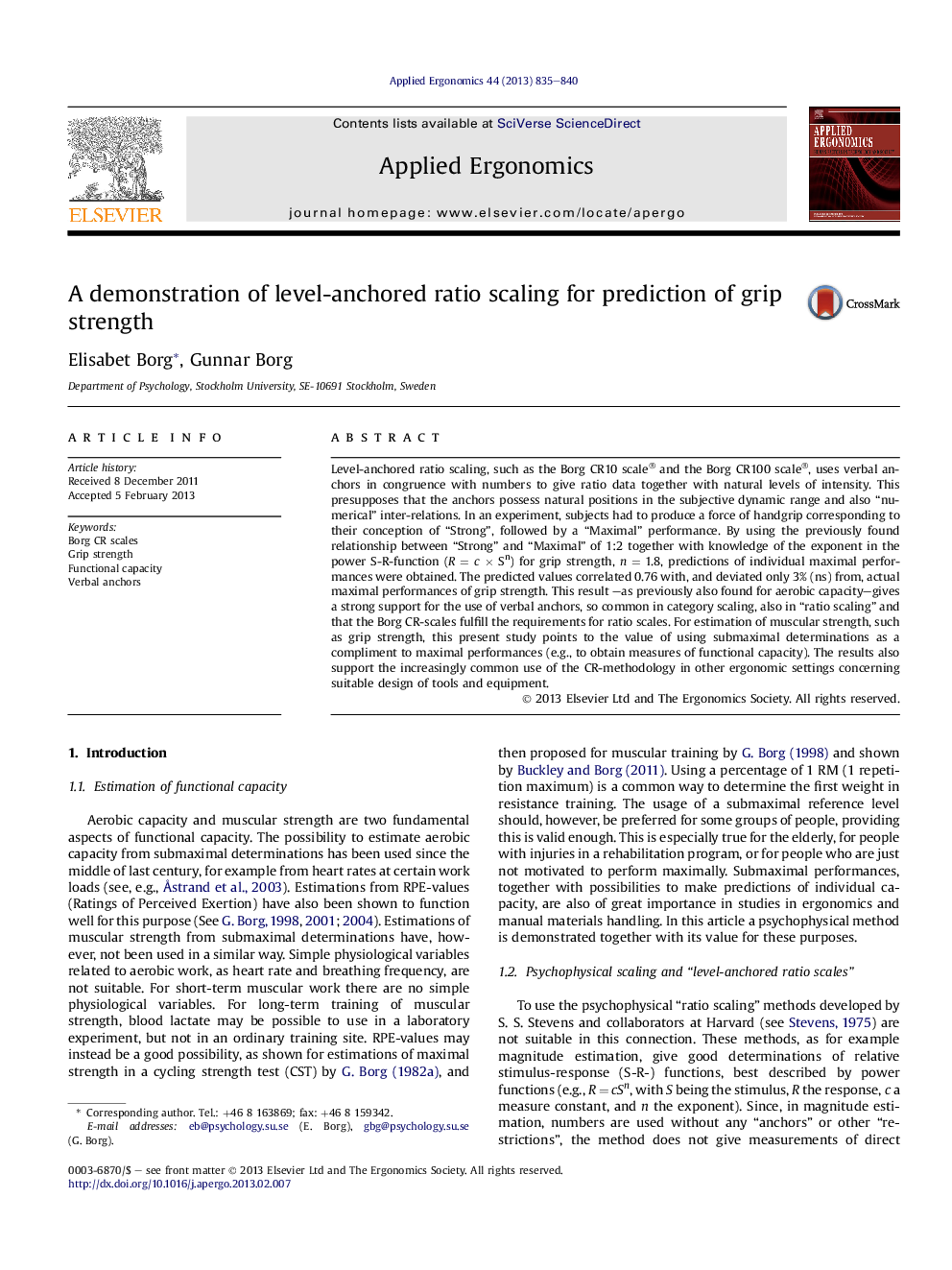| Article ID | Journal | Published Year | Pages | File Type |
|---|---|---|---|---|
| 549343 | Applied Ergonomics | 2013 | 6 Pages |
Level-anchored ratio scaling, such as the Borg CR10 scale® and the Borg CR100 scale®, uses verbal anchors in congruence with numbers to give ratio data together with natural levels of intensity. This presupposes that the anchors possess natural positions in the subjective dynamic range and also “numerical” inter-relations. In an experiment, subjects had to produce a force of handgrip corresponding to their conception of “Strong”, followed by a “Maximal” performance. By using the previously found relationship between “Strong” and “Maximal” of 1:2 together with knowledge of the exponent in the power S-R-function (R = c × Sn) for grip strength, n = 1.8, predictions of individual maximal performances were obtained. The predicted values correlated 0.76 with, and deviated only 3% (ns) from, actual maximal performances of grip strength. This result –as previously also found for aerobic capacity–gives a strong support for the use of verbal anchors, so common in category scaling, also in “ratio scaling” and that the Borg CR-scales fulfill the requirements for ratio scales. For estimation of muscular strength, such as grip strength, this present study points to the value of using submaximal determinations as a compliment to maximal performances (e.g., to obtain measures of functional capacity). The results also support the increasingly common use of the CR-methodology in other ergonomic settings concerning suitable design of tools and equipment.
► Functional capacity in grip strength is accurately predicted from a submaximal level. ► Value of using submaximal determinations in ergonomic studies is demonstrated. ► Maximal performance is predicted from a mental conception, the verbal anchor “Strong”. ► Validity of the position of “Strong” on the Borg CR scales is supported. ► Further support of “level anchored ratio scaling” is obtained.
